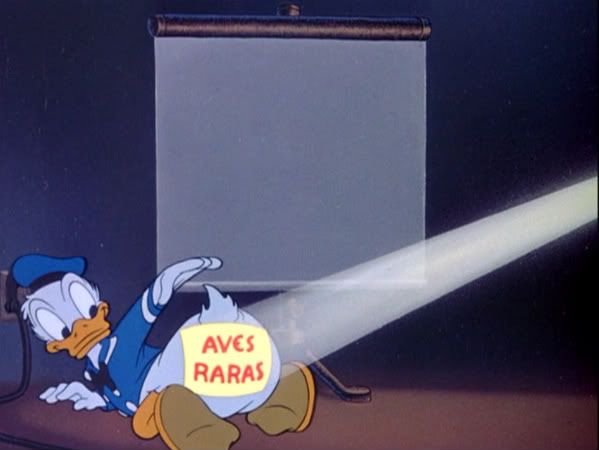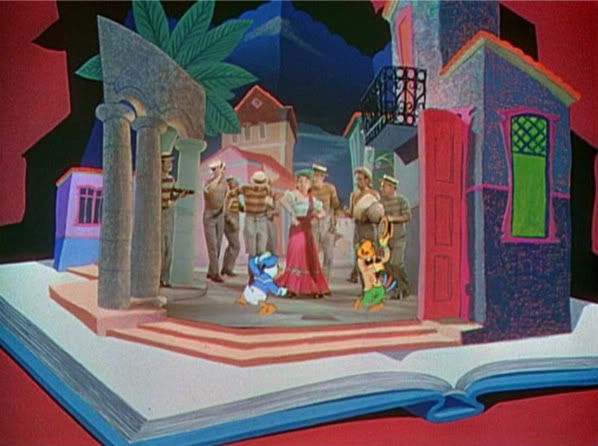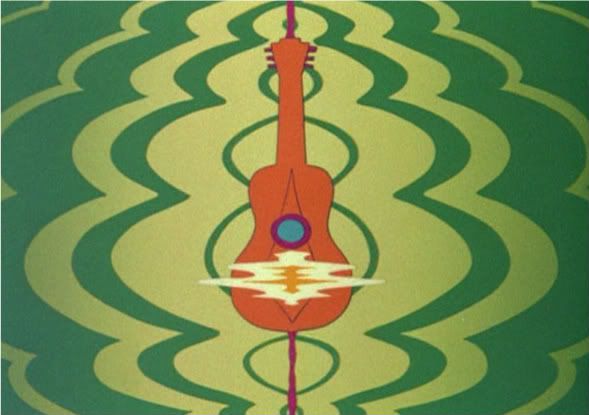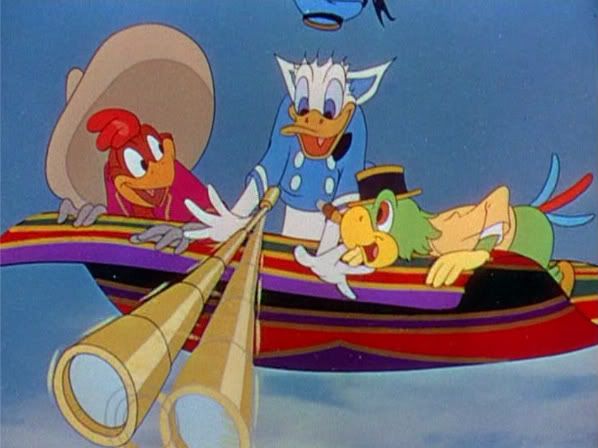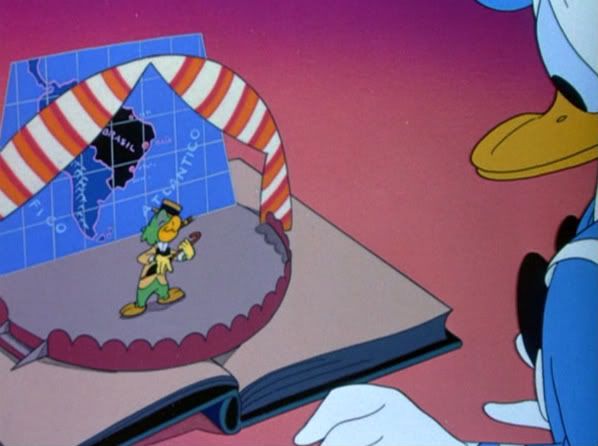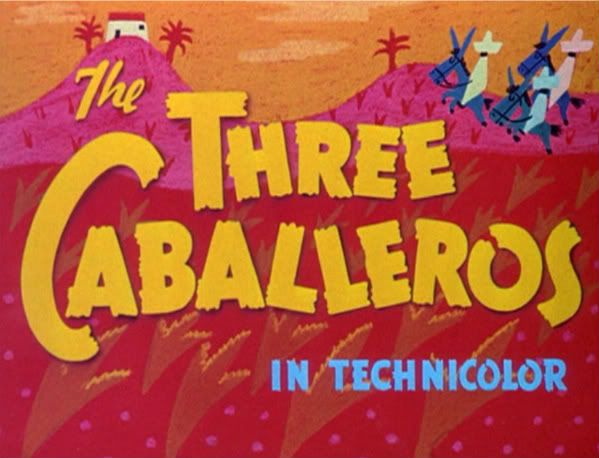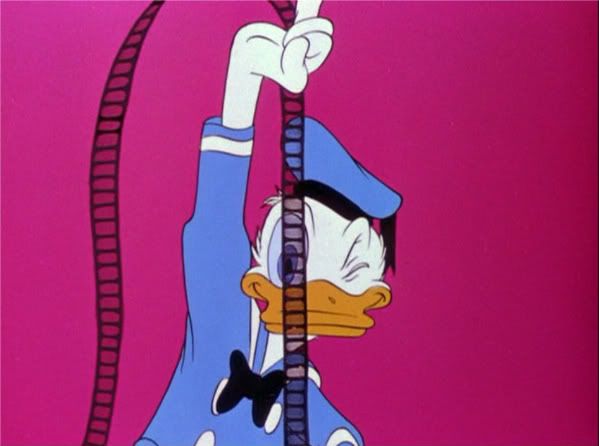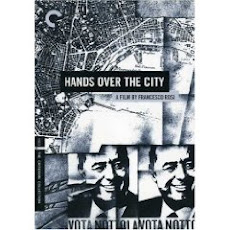








Re-watching Woman is the Future of Man, the conclusion took on a greater importance, beginning with the dream sequence at the soccer field. In my first viewing, I didn't really recall the importance of the red scarf, but on a second look it seems to dominate the mise-en-scene of the last section. It actually provides the only real clue (other than Mun-ho's eyes closing) that we have entered a dream sequence (this is typical of Hong). The presence of the scarf in the rest of the film, for myself, was a reminder of this dream, and I found it difficult to not see the last scenes of the film as dream/nightmare. And upon a second viewing and reflecting back on the rest of the narrative, it also de-stabilized the reality of anything before the dream as well. I should add that this reading is heavily informed by my own interpretation of Hong's latest film, Night and Day, which ends with a dream sequence that really caused me to re-examine the rest of the narrative ( I am anxiously awaiting the DVD release so I can have a second viewing). Incidentally, Night and Day's dream alludes back to his first film, The Day a Pig Fell in the Well, which similarly has a dream sequence near the conclusion.
When I say the reality of the earlier scenes was de-stabilized, I do not mean to suggest a "whole film is a dream" kind of interpretation. Rather, it is a more modernist idea of a certain unreliability at the heart of the narrative, a questioning of who is telling/showing me this, and why. The most obvious example of this is in the two "flashback" scenes in the first half of the narrative. After a brief opening outside of Mun-ho's house, Mun-ho and Heon-jun have a long conversation at a Chinese restaurant, filmed in one long take of over six minutes, although with a few lateral camera movements to and from the front counter. Mun-ho gets angry at Heon-jun for having hugged his wife when they visited him in America, and gets up to leave. Following an attempt at seducing the waitress, he looks out the window and makes eye contact with a woman across the street. The next portion of the narrative is signalled as a flashback, cutting from Heon-jun's look.

This is also the first music we have heard since the opening credits. The music continues into the next shot, in which we see Heon-jun exit a cab and pass in front of the camera.
 The next shot shows a man enter the frame, at which point the music stops.
The next shot shows a man enter the frame, at which point the music stops. Re-watching the film, this whole sequence seems quite ominous, although I did not interpret that way on first viewing. Nevertheless, I do think it is meant to be disconcerting in some way even without knowing what will happen next. We see the man with Seon-hwa (who we haven't been introduced to yet) and learn he is an old high school friend who has just finished his miltiary service. He aggressively forces her into a cab with him. The next shot is of Seon-hwa entering a restaurant and sitting down with Heon-jun, where he tells her that she was raped by this man.
Re-watching the film, this whole sequence seems quite ominous, although I did not interpret that way on first viewing. Nevertheless, I do think it is meant to be disconcerting in some way even without knowing what will happen next. We see the man with Seon-hwa (who we haven't been introduced to yet) and learn he is an old high school friend who has just finished his miltiary service. He aggressively forces her into a cab with him. The next shot is of Seon-hwa entering a restaurant and sitting down with Heon-jun, where he tells her that she was raped by this man.

 The question becomes, and this is not an unfamiliar one within art cinema, who is telling me this? It cannot be Heon-jun, since he was not there. But it could be his imagining of this episode. But then, why the ellipsis of the actual rape itself? Is it because he does not believe her story? Or is his story questionable? The next sequence shows the two at a love motel, where he rather violently watches her genitals and has sex with her in order to "cleanse" her. The scene is quite uncomfortable and cannot help but identify Heon-jun with the same behaviour of this "aggressive and phallic man" (as Huh Moonyung calls this character and other marginal male characters in many of Hong's films [71]). This is especially so because we are presented this scene almost in place of the rape scene that has been "cut".
The question becomes, and this is not an unfamiliar one within art cinema, who is telling me this? It cannot be Heon-jun, since he was not there. But it could be his imagining of this episode. But then, why the ellipsis of the actual rape itself? Is it because he does not believe her story? Or is his story questionable? The next sequence shows the two at a love motel, where he rather violently watches her genitals and has sex with her in order to "cleanse" her. The scene is quite uncomfortable and cannot help but identify Heon-jun with the same behaviour of this "aggressive and phallic man" (as Huh Moonyung calls this character and other marginal male characters in many of Hong's films [71]). This is especially so because we are presented this scene almost in place of the rape scene that has been "cut".Next there is a scene at the airport in which Mun-ho brings Seon-hwa in order to have a tearful farewell to Heon-jun, who is leaving for film school in America. We next cut back to the restaurant for another long take of five minutes in which Seon-hwa is discussed. After Heon-jun leaves the table, there is a narrative and formal repetition in which Mun-ho asks the waitress to pose nude for him, she refuses (as she did with Heon-hun), and then the camera follows her to the counter. The camera pans back at Mun-ho looking out the window at the same woman as Heon-jun. After her ride finally arrives, Mun-ho's flashback begins.
 It is tempting to see this flashback as more clearly Mun-ho's. He is in every scene, and the sequence ends with a rather unflattering sequence in which he prematurely ejaculates. However, the first scene of the flashback shows him forcing himself on Seon-hwa, at which she gets angry and says that "You're all animals. You and that bastard just want sex. Real animals." The fact that she mentions Heon-jun and implicates him with Mun-ho, who had just tried to force himself on her, is suggestive of sexual violence that is constantly referred to and ellided. It should be noted that while they are waiting for Seon-hwa later in the film, Mun-ho says to Heon-jun that she called him a "real animal", not a complete lie but omitting the fact that she said the same thing about Mun-ho as well.
It is tempting to see this flashback as more clearly Mun-ho's. He is in every scene, and the sequence ends with a rather unflattering sequence in which he prematurely ejaculates. However, the first scene of the flashback shows him forcing himself on Seon-hwa, at which she gets angry and says that "You're all animals. You and that bastard just want sex. Real animals." The fact that she mentions Heon-jun and implicates him with Mun-ho, who had just tried to force himself on her, is suggestive of sexual violence that is constantly referred to and ellided. It should be noted that while they are waiting for Seon-hwa later in the film, Mun-ho says to Heon-jun that she called him a "real animal", not a complete lie but omitting the fact that she said the same thing about Mun-ho as well.Another oddity to Mun-ho's flashback is the strange doubling of Seon-hwa's friends.

 These two shots appear before and after the scene in which Mun-ho forces himself on Seon-hwa, and they seemingly erase it, as Mun-ho and Seon-hwa meet at the wedding and seem to get along well, agreeing to meet the next day.
These two shots appear before and after the scene in which Mun-ho forces himself on Seon-hwa, and they seemingly erase it, as Mun-ho and Seon-hwa meet at the wedding and seem to get along well, agreeing to meet the next day.This dream-life effect continues in the rest of the narrative, culminating in an actual dream sequence and then a repetition of the rapist character from earlier. Kyunghee, Mun-ho's student with the red scarf, has a jealous and obsessive classmate, Minwoo, who follows her and Mun-ho to a love motel. This character brings the narrative full circle, both literally and figuratively. All of the male characters are stuck in some way, unable to break out of circular thinking, especially as centered around women and sexuality.
What to make of these observations? I'm not sure. Hong's films seem to me to be very elusive in their meaning. But I do not think that they are apolitical, as some critics and even Hong himself has claimed. Certainly, they are less overtly political than many of the First Korean New Wave directors that dealt with the highly charged politics of Korea's immediate past. And compared to Lee Chang-dong, Hong's films lack a real political force, partly because of their content but also because of their less direct, more ambiguous style. To view Hong's films as imaginary, dreams and fictions is not the same as saying they are lies, but they are nevertheless unreliable as any kind of foundational truth. They are examples of a post-structuralist skepticism that can and of course has (repeatedly) been seen as conservative or reactionary because of its apolitical nature.
As much as I admired Hong's films at first viewing, I did feel they were somehow lesser than Lee's more straightforward political films. I still feel this way to some extent. I don't think Hong's greatest films can be compared to the artistic and social force of the masterpieces of a director like Lee or, perhaps more so, a Hou Hsiao-hsien. But I'm starting to find a greater appreciation of what Hong is trying to achieve, not only artistically but also socially (for me the two are as impossible to really untangle as form and content). If the personal is political, than Hong's work is clearly very socially charged. But form is also a social statement. As much as I continue to love Lee Chang-dong, a third viewing of his 1999 film Peppermint Candy revealed a certain crudity in the form that may make the film less progressive than its message indicates. This attempt at analyzing Woman is the Future of Man, on the other hand, has revealed a much deeper, more critical film than it first appeared.
Apologies for the length of the post, and for its roaming nature, but this is what blog postings are useful for, I think, especially to those of us used to more academic writing. Anxious to read other accounts and perspectives on the film.






